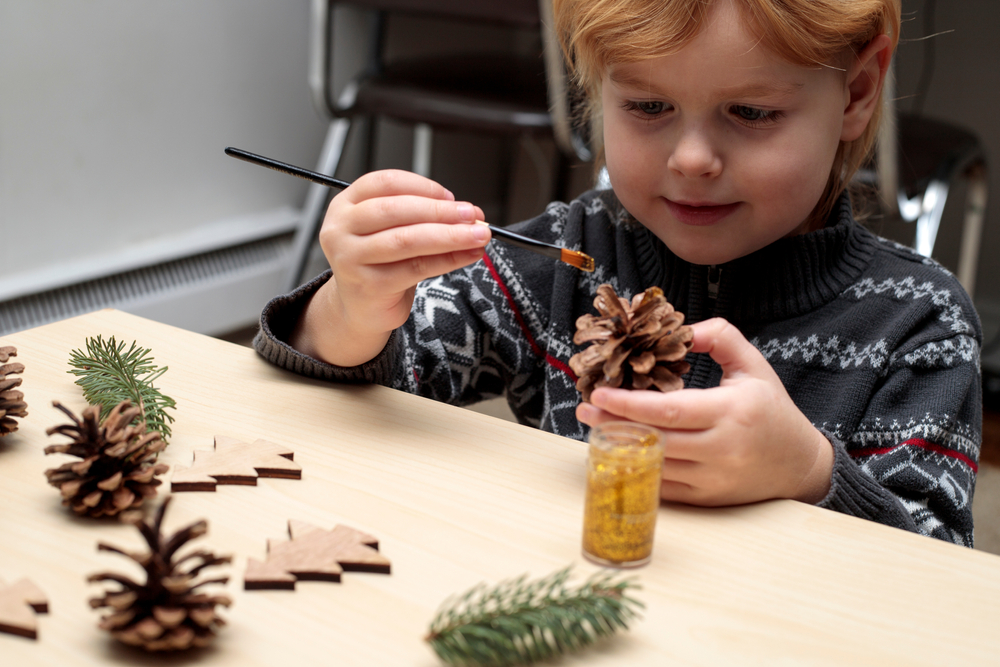Animal identification Math Worksheets for Ages 3-9 - Page 2
33 filtered results
-
From - To
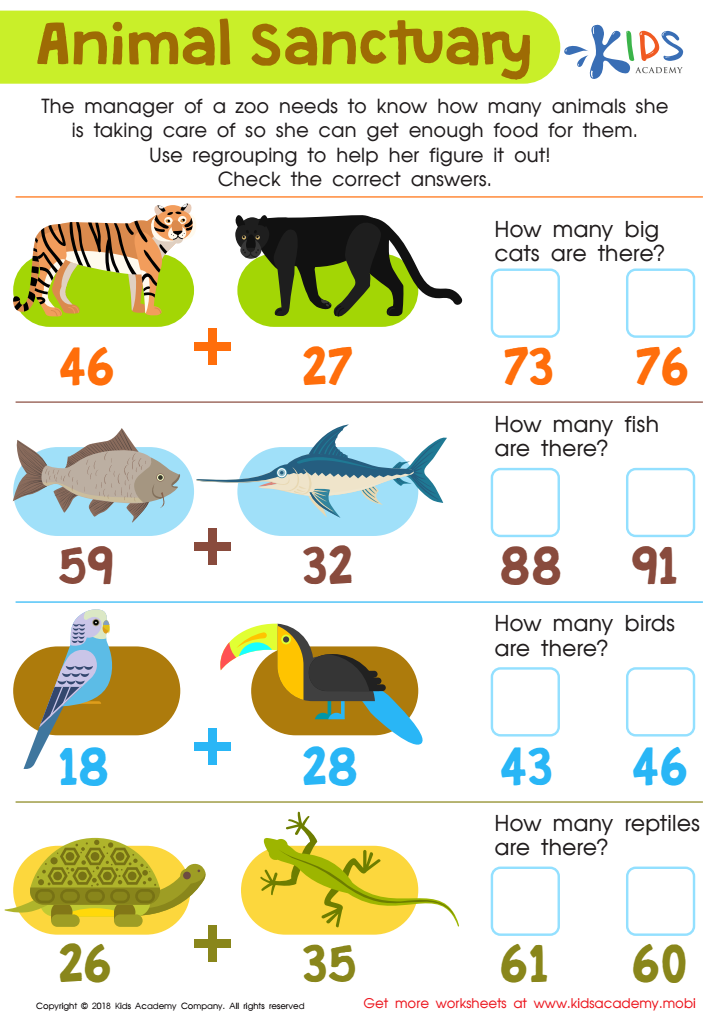

Animal Sanctuary Worksheet
Animal identification math for ages 3-9 offers a compelling blend of educational and developmental benefits, making it an essential tool for parents and teachers. At this formative stage, children's brains are exceptionally receptive to visual and sensory learning experiences. Integrating animals into math exercises not only engages young minds but also fosters a love for learning.
Firstly, animals naturally attract children's interest and curiosity. Utilizing their fascination for animals as part of math lessons maintains high levels of engagement and participation. For example, counting animals, sorting them by type or size, and creating simple addition or subtraction problems with animals make abstract mathematical concepts more tangible and relatable.
Secondly, this method supports cognitive development. Identifying animals and counting or categorizing them enhances critical thinking, pattern recognition, and problem-solving skills. It further develops number sense by providing practical examples children can visualize and understand easily.
Moreover, this approach encourages curiosity and discovery. Learning to identify different animals while performing math exercises can spark an interest in the natural world, promoting interdisciplinary learning that includes science and geography. Socially, discussing animals and solving problems together enhances teamwork and communication skills.
By integrating animal identification with math learning, parents and teachers create a dynamic, multi-sensory learning experience that encourages enthusiasm, deepens understanding, and develops essential cognitive abilities in young children.
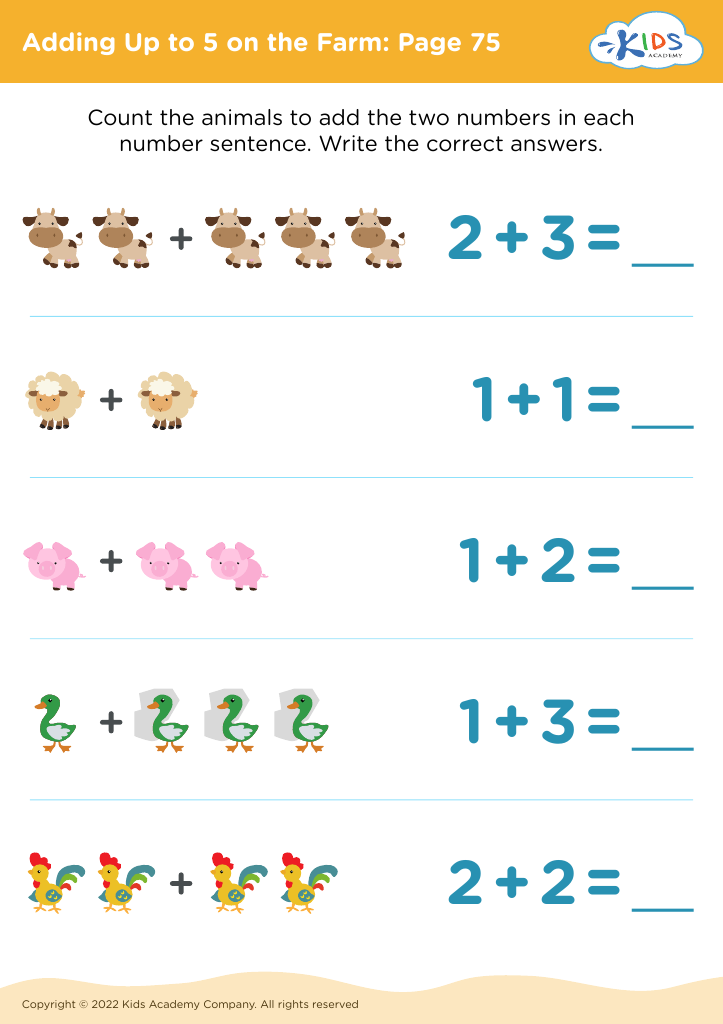
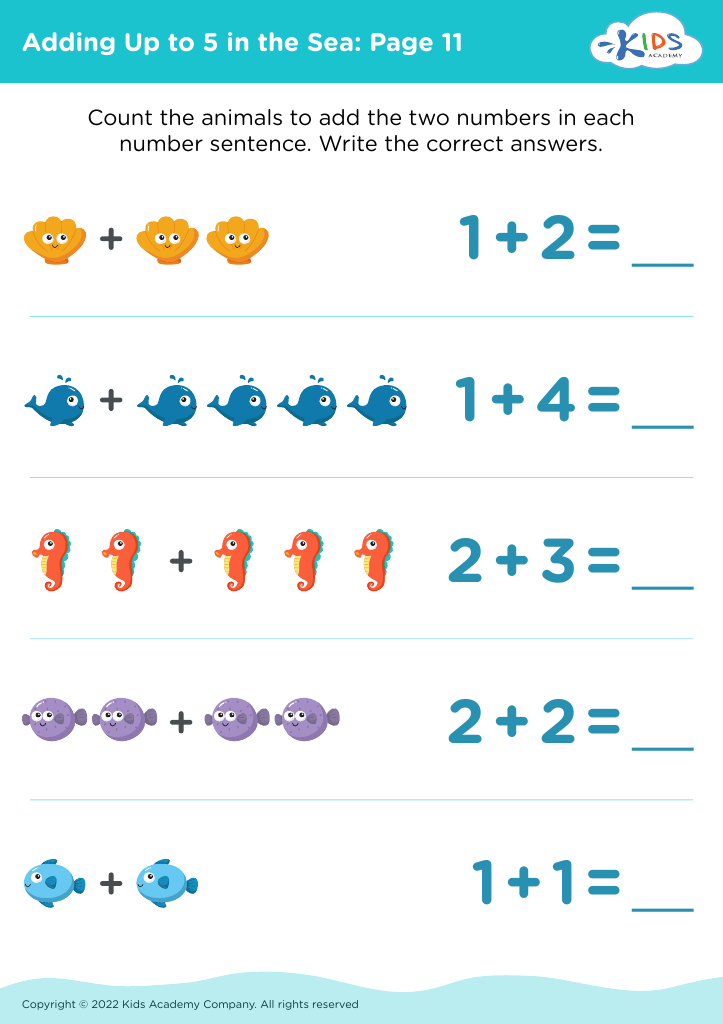
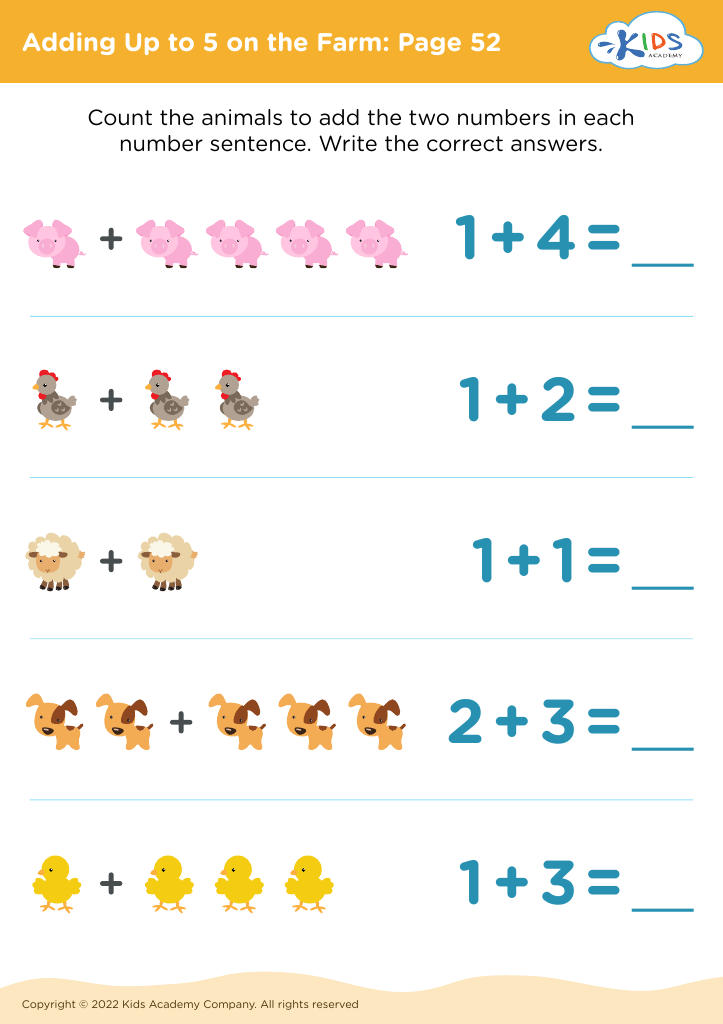

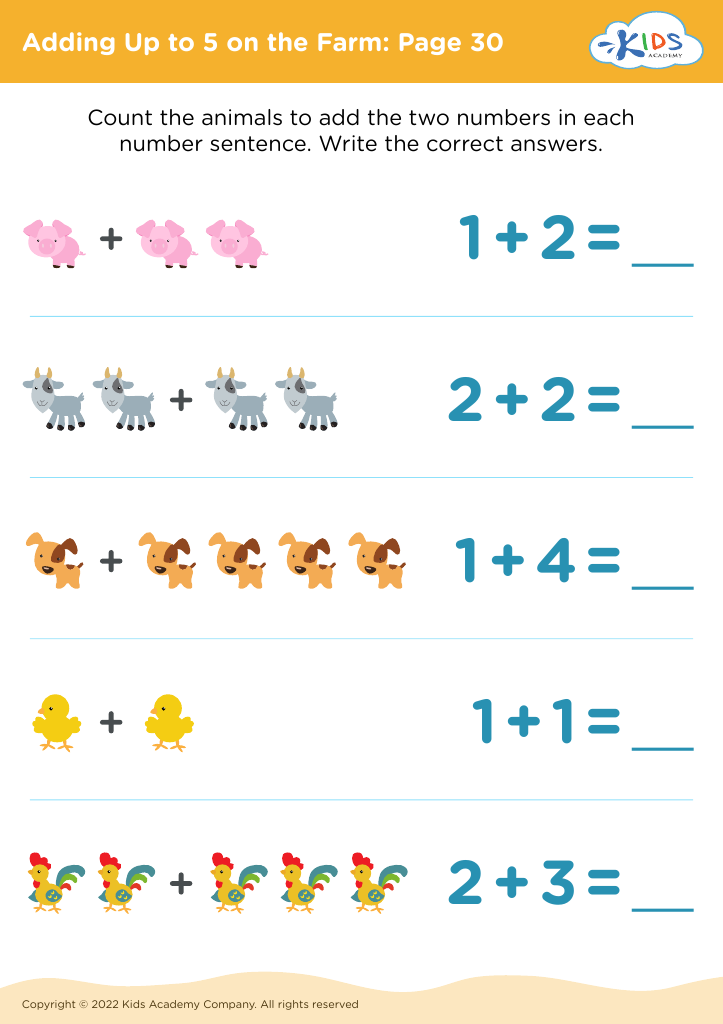
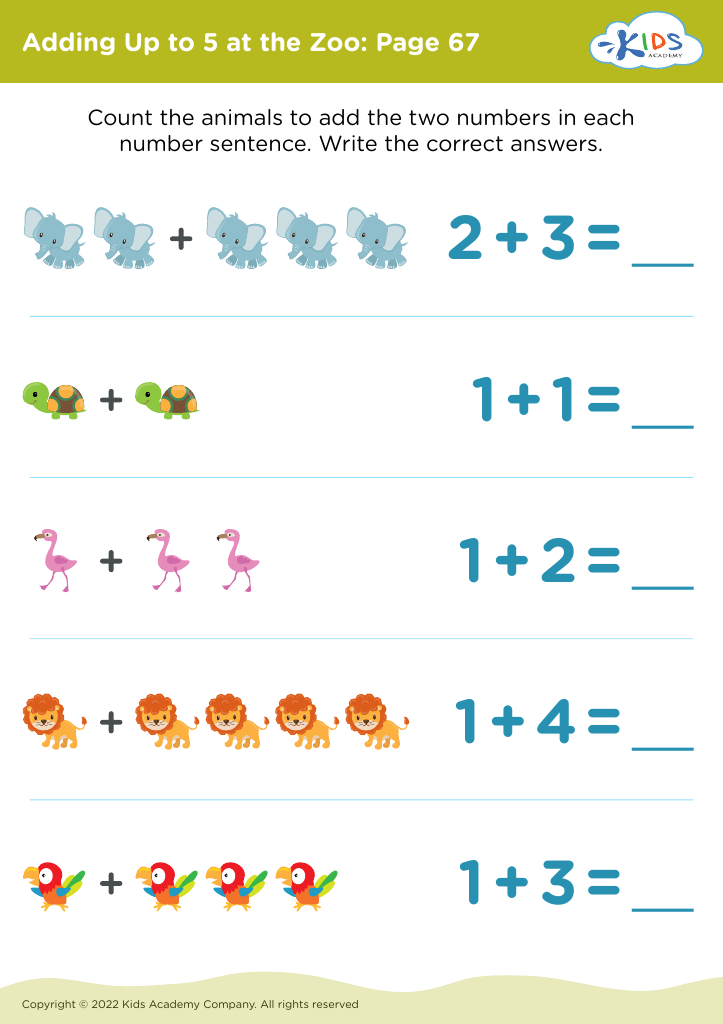
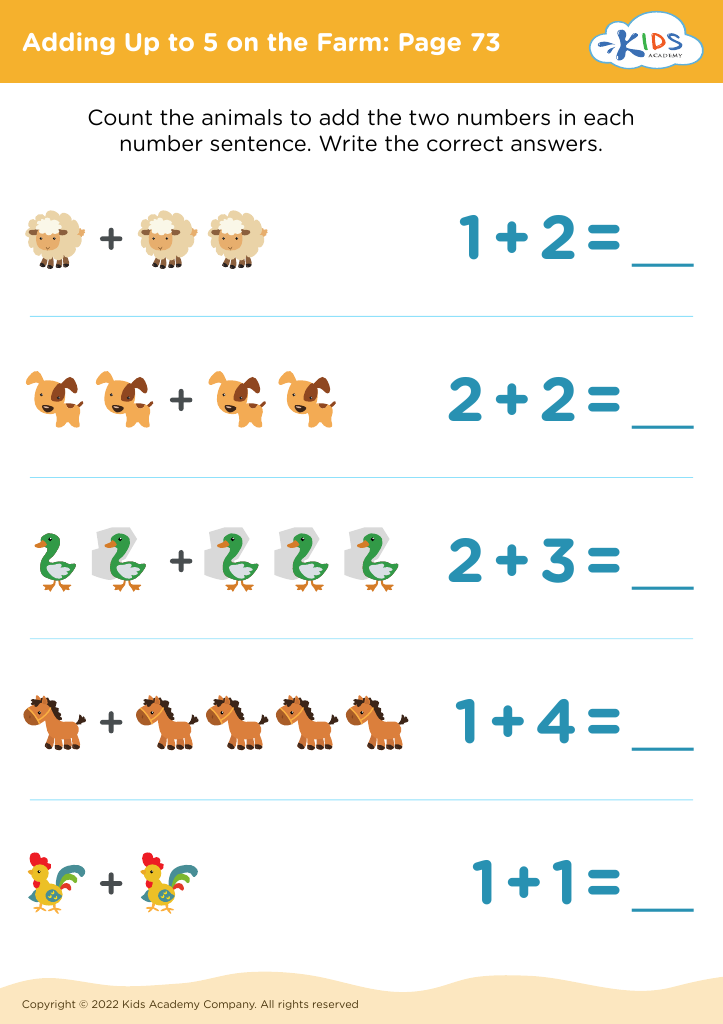
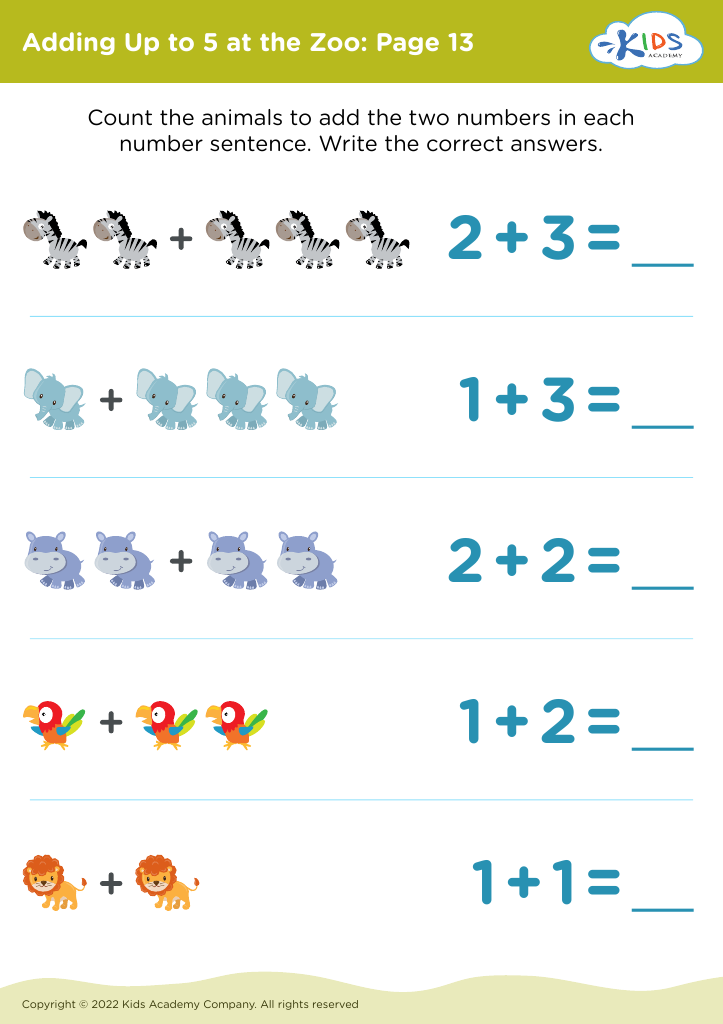
 Assign to My Students
Assign to My Students


